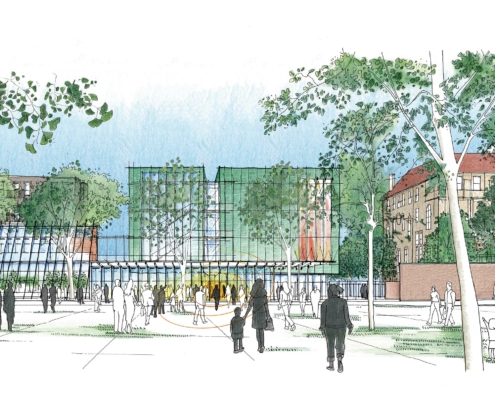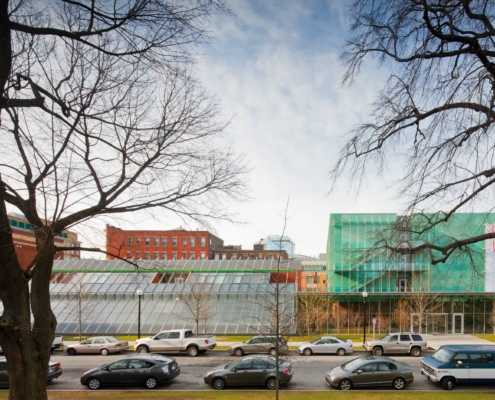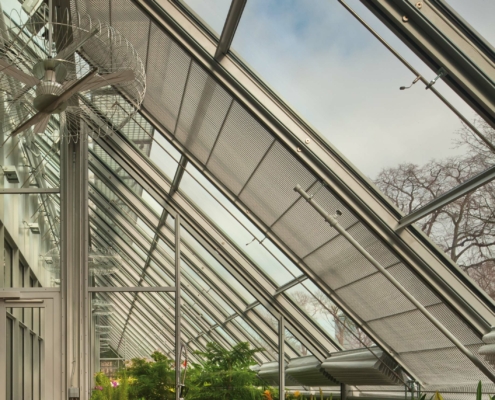Isabella Stewart Gardner Museum Expansion
Renzo Piano Building Workshop (with Santec--Burt Hill) | Website | 2012 | Visitor Information
"
Boston’s original Isabella Stewart Gardner Museum opened in 1903 at Fenway Court, a Venetian-style palazzo built by the patroness Isabella Stewart Gardner to showcase her substantial collection of over 2,500 works of fine and decorative art, including tapestries, furniture, manuscripts and textiles, from Europe, Asia, the Islamic world and America. Due to a large increase in the number of annual visitors and the need for a greater variety of spaces, the Museum launched an Extension and Preservation Project, commissioning sufficient extra space to return the palazzo’s rooms to their original glory. The new extension sits elegantly in the museum gardens at a discreet distance from the original building, to which it is linked by a glass corridor. The four-storey building with its carefully restrained roofline is clad in glass and green panels of oxidized copper. The extension is composed of four separate volumes linked by glazed circulation spaces including a grand central staircase. Each volume accommodates a different programmatic element of the museum. The largest is the 296-seat auditorium, which has three balcony levels arranged around a central stage, lit from above by a skylight. The second largest is the 2,000 square foot special exhibition gallery, which includes an annexe gallery for light-sensitive objects. The glass north wall has micro-louvers, allowing for minute adjustments to light levels, perfect for the diverse requirements of the gallery space. This is supplemented by the movable translucent ceiling, which provides a way to vary spatial conditions to specific exhibition requirements. Finally, the smallest two volumes contain administrative areas, conservation labs and support spaces for the performance hall. These volumes ‘float’ above a wholly transparent ground floor, which is like an airy greenhouse looking out through the trees. This level is inhabited by classrooms, cafe and orientation areas. / Entrance to the Museum is made through the new entrance atrium on Evans Way, flanked along the street front by greenhouses that serve the Museum’s horticultural program, and above which are found the artist-in-residence apartments, addressing the park from beneath their sloping glazed roof. / Leadership in Energy and Environmental Design (LEED) certification is ensured by the incorporation of a geothermal well system, daylight harvesting, water-efficient landscaping techniques and the use of vernacular materials.
"
Information provided in part by: Renzo Piano Building Workshop Architects







